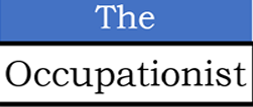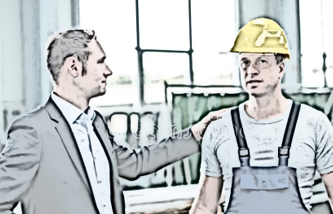History is proof to many business owners taking steps to prevent illnesses and accidents in workers either due to compassion or to be seen as a good employer. History is proof also to ruthless business owners with scant regard to worker health.
There are no records or stories of worker health during ancient civilizations. Massive structures were made using stone and other mixtures. A lot of carving on stones was also done. All this in an era when there was no knowledge that work can harm health; and perhaps there were no gloves, masks etc. One can only imagine the state of worker health. Hundreds of years ago, the kings and the rich were the big business owners.
The situation of worker health is no different even now, more in the unorganised sectors but a lot needs to be done in the organised sectors as well, especially the banking and IT industry. One of the reasons is lack of awareness that work can harm health.
Mining was a big business before the industrial revolution (1760 AD). Hippocrates (460-377 B.C), whose famous Hippocratic Oath taken by medical students world-wide, contributed to field of Occupational Health (worker health) by describing symptoms of lead poisoning in miners and metallurgists.
Paracelsus (1493 AD to 1541 AD), a Swiss physician described lung diseases among miners and attributed it to vapours that originated from metals.
Agricola (1494 AD to 1555 AD) was a physician appointed to the mining town of Jochimstral in the Swiss mountains. He Wrote De Re Metallica, a comprehensive discourse addressing every aspect of mining, smelting and refining. He noted the need to provide ventilation for miners, and described “asthma” among workers who toiled in dusty mines. Agricola wrote, “Some mines are so dry that they are entirely devoid of water and this dryness causes the workmen even greater harm, for the dust, which is stirred and beaten up by digging, penetrates into the windpipe and lungs, and produces difficulty in breathing and the disease the Greeks call asthma. If the dust has corrosive qualities, it eats away the lungs and implants consumption in the body. In the Carpathian mountains women are found who have married seven husbands, all of whom this terrible consumption has carried off to a premature death.”
History is proof also to ruthless business owners with scant regard to worker health.
Bernardino Ramazzini – 1633-1714, an Italian physician, whose book De Morbis Artificium Diatriba (The Diseases of Workmen) described the symptoms of mercury and lead poisoning and other occupational diseases. He wrote about the pathology of silicosis and recommended precautions to avoid hazards. He also advised physicians to learn about occupational diseases by studying the work environment, and persuaded them to always ask patients “Of what trade are you?” or simply stated “what is your occupation”. Ramazzini is aptly called as the father of industrial (occupational) medicine.
During IR 1.0 (Industrial Revolution 1.0) which was the start of Industrial revolution in 1760 AD, workers were treated no less than slaves. There are some recorded incidents which are indicative of total disregard for worker health, both men and women.
Rapid industrialization led to overcrowding of towns. For example, population in The Port of Liverpool increased exponentially in a short span of time. Diseases were rampant. Science was not as advanced as it is today, so, people didn’t know what was going wrong. The governing (business) classes who lived in different areas never saw these conditions, and protests from the workers were ignored, says Wilde, Robert in his article “Public Health During the Industrial Revolution.” ThoughtCo, Apr. 5, 2023, thoughtco.com/public-health-in-the-industrial-revolution-1221641.
In 1832, one doctor said only 10% of Leeds (UK) was in full health. Tuberculosis, typhus, and after 1831, cholera was rampant. The 1842 report by the British social reformer Edwin Chadwick called “Report on the Sanitary Condition of the Labouring Population of Great Britain” showed that the life expectancy of an urban dweller was less than that of a rural one.
The terrible working environments created new occupational hazards, such as lung disease and bone deformities.
The first Public Health act was passed in 1848 based on the recommendations of a Royal Commission and Chadwick was among others was also appointed to the board. The act is considered to have failed as the death rate remained the same, and the problems remained, but it did establish a precedent for government intervention as opposed to laissez-faire system in which governments didn’t interfere in the lives of adult men. Chadwick was disliked and some wags in the government claimed they preferred cholera to him.
History is proof to many business owners taking steps to prevent illnesses and accidents in workers either due to compassion or to be seen as a good employer.
In 1875 Prime Minister Benjamin Disraeli who was not a businessman, passed several acts aimed at social improvements, such as a new Public Health Act and an Artisan’s Dwellings Act. A Food and Drink Act was passed to attempt to improve diet. These acts marked the beginning of a genuine, workable public health strategy, with responsibility shared between the local and national government, and the death rate finally began to fall.
In India, as early as 1895, Jamsetji Tata, a prominent businessman, while speaking at the opening of a new extension of Empress Mills, Jamsetji Tata talked about some of the specific steps that Empress Mills had taken for employee care. For instance, on the subject of ventilation in the mills, Jamsetji said, ‘we have paid the greatest attention to sanitary arrangements, and constantly studied the question with the view to improve them.’
Tata further said, ‘we have provided fans for ventilation, humidifiers to prevent the effects of extremely dry air, khus-khus tatties for cooling the rooms, which must, by the nature of our business, get hotter in the hot weather. But still we are not satisfied with what we have done.’ Continuing his address, Jamsetji said, ‘We are about to try a new scheme in the shed. This scheme, we hope, will be a great improvement upon what we have hitherto done, and we are confident that if it succeeds in nothing else, it is sure to succeed in one thing – and that is in giving an equally distributed supply of free, fresh and pure air to our workpeople.’
This was a profound speech by Jamsetji Tata, and a great thought process in Occupational Health (OH) and Industrial Hygiene (IH) in India almost 145 years ago. Even the developed world then wasn’t as compassionate to the workers and were struggling to lay down the fundamentals of OH and IH.
Business owners not having a strong commitment to worker health will appear to their employees, the peers and the public like the cruel and self-centered mine-operators of the 15th century.
An incident relating to a coffee break in 1968 led Sidney Harman, cofounder of Harman Kardon music systems to revamp the factory and its working and turned it into a kind of college campus offering classes in the factory premises including piano lessons. Prior to revamping, the factory was in Harman’s words, raw, ugly and in many ways demeaning.
Revamping the factory by Harman also meant providing safer and better working conditions to the workers resulting in fewer work-related illnesses and accidents.
Harman not only became a leader but somewhere unknowingly he also introduced good practice of occupational health as the era of sweat shops was long over and he must have viewed the coffee break as an important link between worker health and work performance. The workers were encouraged to take most of the responsibility to run the workplace.
Ratan Tata’s contribution to Occupational Health in the Indica car factory in 1996-97 in one of awareness, compassion and willingness. Ratan Tata had noticed the operators fix the rear strut of the car manually and would have to bend down 600 times to complete this operation on 300 cars each day. He had called his managers and asked, ‘how can we expect our men to do this throughout their lives? Surely it will damage their health. We must provide an automation solution on priority.’ The engineering department rose to the occasion and quickly developed a fixture to semi-automate the operation.
Around April 2009, by getting the goats to mow the lawns and remove the brush (dry grass), Google did a master stroke of using principles of Occupational Health, albeit, unknowingly, by taking care of employee wellness, environmental health (air and noise pollution), social responsibility (local communities) and compliance of California laws to remove excess brush to reduce any chance of brush fires.
Google said that the cost of hiring 200 goats is about the same price as mowing, but the goats were “a lot cuter to watch.” While the intent was to contribute to reducing noise and air pollution without affecting the cost, Google unknowingly contributed to employee wellness and happiness by stating that goats were a lot cuter to watch.
Not to be outdone, rival company Yahoo tweeted at Google saying, ‘they like our grass too.’ with a link of goats grazing on Yahoo properties in Sunnyvale.
Similarly, many companies have a fish tank in their offices or a small garden or a cozy sit out – these are good for employee health. It is another matter that most companies do it for the sake of making the office look attractive, contemporary and upmarket. Usually, such initiatives are done by the companies out of their own accord and often not knowing that it is contributing to employee health and wellness. That’s the power of Occupational Health – it is omnipresent and small changes usually bring about big changes.
I sometimes feel that Occupational Health (OH) at a basic level requires alertness, compassion, and willingness. Alertness identifies a problem of the worker, compassion is about understanding the suffering faced, and willingness is the action taken to alleviate the suffering. If employers or senior managers exhibit alertness, compassion, and willingness to situations at workplace during their walkthrough rounds or from inputs by an OH physician, a lot can be done and achieved in the arena of OH (occupational health) and eventually in protecting worker health.
If personal health is important and public health necessary, then Occupational Health is both, important and necessary. This is because only OH has the ability to mitigate illnesses due to work (Occupational Illnesses) which is still killing millions every year. The irony is that OH is neglected knowing well that we all work and it could affect all of us too.
Companies not having a strong commitment to worker health will appear to their employees, the peers and the public like the cruel and self-centered mine-operators of the 15th century.
No work is safe – it must be made safe, and every stakeholder, including business owners must work towards it. Even if practices of OH are established initially in bits and pieces, it can go a long way in improving worker health.
How pathetic it is for a child to see a parent come home from work looking sick and/or dying a slow death due to the nature of work done. Establishing OH practices can undo that to a large extent.
For more info, contact
____________________________________________________________________________________________
Dr Ajay Sati is an Occupational Health physician who prefers to describe himself as an Occupationist, to denote, ‘an expert in diseases and other concerns of occupations.’ Dr Sati has managed health and wellness programs in industries he worked, like the atomic energy, and energy (oil & gas) in India and overseas. An experienced virtual consultation expert he was involved in many greenfield and brownfield projects providing inputs from health point of view.



